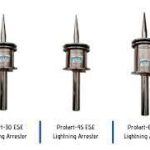In today’s competitive industrial landscape, laser cutting services have become a cornerstone of modern manufacturing and design. Known for their precision, efficiency, and versatility, these services are widely used across industries such as automotive, aerospace, construction, electronics, and signage.
As businesses increasingly seek ways to optimize production while maintaining accuracy and quality, laser cutting offers a powerful solution that balances speed with detail. This guide explores the fundamentals of laser cutting, its working process, key advantages, major applications, and essential factors businesses should consider before choosing a service provider.
What Is Laser Cutting?
Laser cutting is a manufacturing technique that utilizes a highly concentrated beam of light to cut, engrave, or etch materials. The focused beam melts, burns, or vaporizes the material along a predefined path, leaving smooth, clean edges. Because it is a non-contact process, there is minimal mechanical stress on the workpiece, resulting in superior accuracy and minimal material deformation. Laser cutting is used on a variety of materials, including metals, plastics, wood, glass, and composites, making it suitable for both industrial and creative applications.
The process has evolved significantly over the past few decades, driven by advancements in laser technology and automation. Today’s laser cutting machines are capable of handling complex geometries with high repeatability, offering manufacturers greater flexibility and efficiency compared to traditional cutting techniques like sawing or drilling.
According to marketintelo, “The Global Laser Cutting Services market size was valued at $5.2 billion in 2024, and is forecasted to hit $11.6 billion by 2033, growing at a CAGR of 9.3% during the forecast period.”
How Laser Cutting Works
The laser cutting process begins with the preparation of a digital design file that defines the shape, size, and pattern of the cut. Using computer-aided design (CAD) software, designers create a model that the laser cutter follows precisely. Once the file is uploaded, the laser system calibrates itself to focus the beam on the exact point of the material.
During cutting, the laser beam moves along the programmed path, either cutting through the material completely or engraving its surface, depending on the settings. The intensity and speed of the beam are adjusted according to the type and thickness of the material.
To enhance precision and quality, assist gases such as oxygen, nitrogen, or compressed air are often used to blow away molten material and prevent oxidation. After cutting, the finished components usually require little to no post-processing, as laser cutting produces smooth and burr-free edges.
Types of Laser Cutting Technologies
Several types of laser cutting technologies are used across industries, each designed for specific materials and applications. CO₂ laser cutting is one of the most common types, ideal for non-metallic materials such as wood, acrylic, leather, glass, and certain plastics. It delivers smooth and polished edges, which is why it is often used in signage, decorative design, and packaging.
Fiber laser cutting, on the other hand, is more efficient for metals like stainless steel, aluminum, brass, and copper. It operates faster and requires less maintenance than CO₂ systems, making it a preferred choice for industrial manufacturing. Another specialized technology is Nd:YAG (Neodymium-Doped Yttrium Aluminum Garnet) laser cutting, which is used for high-precision tasks such as medical instruments and electronic components where extreme accuracy is essential.
Key Benefits of Laser Cutting for Businesses
Laser cutting offers multiple benefits that make it a valuable addition to modern production processes. One of the most significant advantages is precision and accuracy. The process can achieve tolerances as fine as ±0.1 mm, which is critical in sectors like aerospace and automotive manufacturing where even small deviations can impact performance.
Another advantage is versatility. Laser cutting can process a wide range of materials — from metals and plastics to textiles and composites — without requiring different tools. This versatility allows businesses to switch between projects easily and cater to varied customer demands. Efficiency and speed are also major strengths; automated laser cutters can work continuously with minimal supervision, significantly reducing production time.
Additionally, laser cutting minimizes material waste by optimizing cutting paths and ensuring maximum use of raw materials. This not only reduces costs but also supports sustainability goals. The process also produces smooth and clean finishes, eliminating the need for additional surface treatment or mechanical finishing. Finally, the digital nature of laser cutting enables quick design modifications, making it ideal for rapid prototyping and customized production.
Applications of Laser Cutting Across Industries
Laser cutting services are used in diverse industries due to their adaptability and consistency. In industrial manufacturing, the technology is widely used to produce machine components, enclosures, and sheet metal parts that demand precision and durability. The automotive industry relies on laser cutting to create intricate components such as exhaust parts, chassis panels, and interior detailing, ensuring both performance and aesthetics.
In architecture and construction, laser cutting enables the creation of decorative facades, structural frameworks, and intricate metal screens that add both functionality and visual appeal. Electronics and medical device manufacturers use laser cutting to fabricate small, high-precision parts where accuracy is critical. Additionally, designers, artists, and small-scale manufacturers employ laser cutting for customized engravings, prototypes, jewelry, and packaging designs. The ability to produce complex designs with minimal waste makes laser cutting suitable for both large-scale production and creative industries.
Factors to Consider When Choosing a Laser Cutting Service
Selecting the right laser cutting service provider is crucial for achieving high-quality results. One of the first considerations should be material compatibility. Not all laser cutters can handle every material, so it is important to ensure that the provider’s technology aligns with your requirements. Equipment and technology also play a major role, as newer laser systems often deliver faster processing speeds, higher accuracy, and lower energy consumption.
Businesses should also pay attention to tolerance and precision standards. For industries like electronics or automotive manufacturing, even the smallest deviation can cause performance issues. Evaluating a provider’s production capacity and turnaround time is equally important, especially if you require bulk production or ongoing manufacturing.
Furthermore, companies should verify whether the provider follows quality assurance protocols and certifications such as ISO 9001, which ensure consistent performance and adherence to industry standards. While cost is a factor, it should not be the only criterion — choosing the cheapest option may lead to compromises in accuracy or reliability. Instead, businesses should assess overall value by considering expertise, equipment quality, and delivery timelines.
Laser Cutting Compared to Traditional Methods
Compared with conventional cutting methods such as plasma, waterjet, or mechanical cutting, laser cutting stands out for its superior precision, minimal heat-affected zones, and cleaner finish. While waterjet cutting can handle a broader range of materials, it is generally slower and requires more post-processing.
Plasma cutting, though effective for thicker metals, cannot match the fine detail achievable with laser technology. Laser cutting also consumes less material, requires minimal maintenance, and allows faster design changes, making it ideal for industries that demand flexibility and high accuracy.
Emerging Trends in Laser Cutting Technology
The laser cutting industry continues to evolve rapidly with technological innovation. Automation is becoming increasingly common, with AI-driven systems and robotics enhancing efficiency and reducing human error. Hybrid manufacturing, which combines laser cutting with additive manufacturing (3D printing) or CNC machining, is expanding possibilities for complex fabrication. Moreover, sustainability-focused developments are helping reduce energy consumption and material waste, making laser cutting more eco-friendly. As digital manufacturing continues to advance, the integration of smart sensors, IoT connectivity, and predictive maintenance is further improving machine reliability and production output.
Conclusion
Laser cutting services have revolutionized modern production by combining precision, versatility, and speed. Whether applied in large-scale industrial manufacturing or creative design, laser cutting enables businesses to achieve consistent quality while optimizing resources. Its ability to handle diverse materials, produce intricate designs, and reduce waste makes it an indispensable part of today’s manufacturing ecosystem.
For businesses seeking to enhance their production capabilities, understanding how laser cutting works — along with its benefits, applications, and limitations — provides a strong foundation for making informed decisions. As technology continues to evolve, laser cutting will remain at the forefront of advanced manufacturing, shaping the future of design and fabrication across industries.

